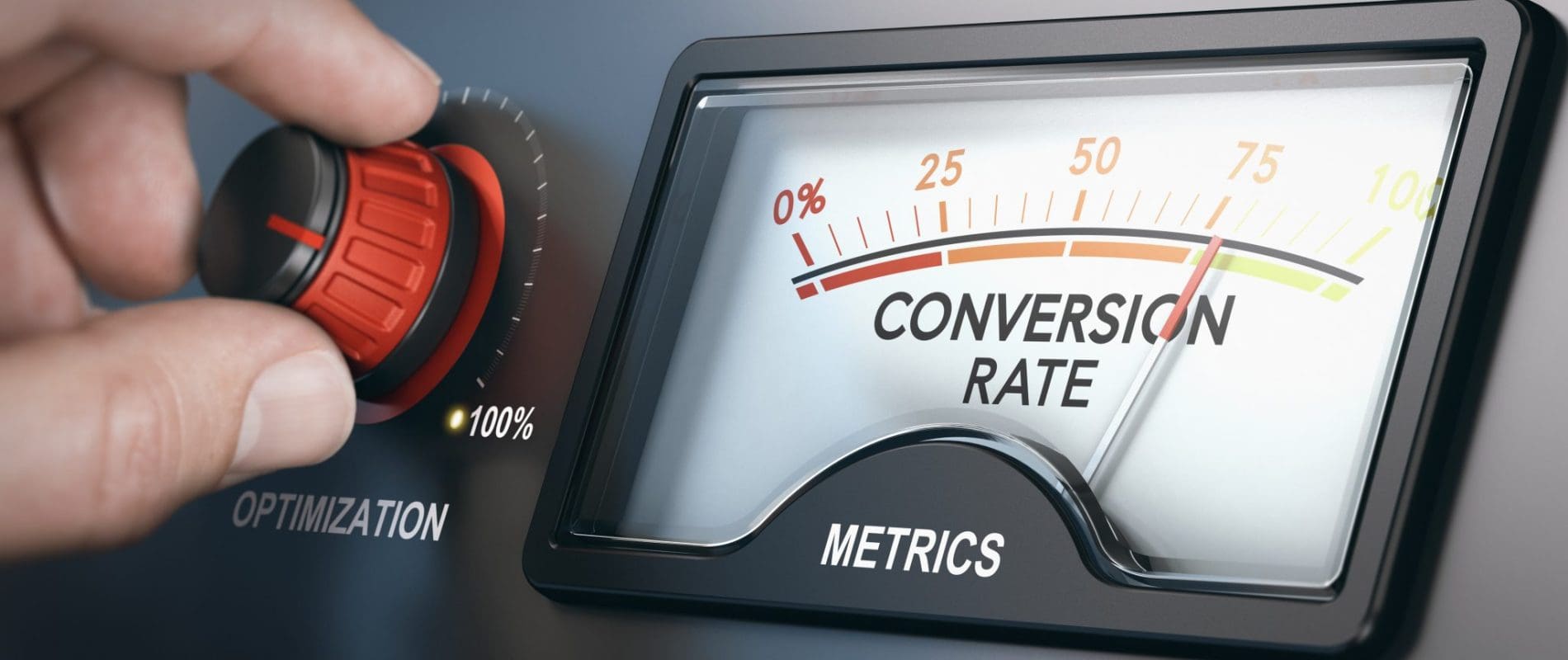
What is CRO & how to measure it.
Conversion Rate Optimisation (CRO)
Conversion is when a website visitor completes a desired action. This could be creating an account, signing up for email updates, downloading an app, making a purchase or something else.
CRO is a systematic and structured approach used to maximise your website’s performance. In essence, CRO refers to making the most of the website traffic you have already, but it cannot be based purely on guess-work or around what other organisations are doing. CRO is also not about simply getting as many leads as possible. It is about positive engagement and quality leads.
Measuring Your Conversion Rate
There are a number of different measurements you can use to gauge conversion rates. These can then be used to identify problematic areas as well as those which are working well so you can design an action plan going forward.
Firstly, to work out your current conversion rates, you need to take the number of people who carried out the desired action. Next, divide this figure by the number of visitors to your website in the same period. So a thousand visitors and ten conversions equals a one per cent conversion rate.
The next statistics to consider are bounce rates, exit rates and engagement metrics. Knowing what these are will help marketers to create hypotheses which are testable. Bounce rates refer to the number of people (percentage) who view a single page of your website and then leave. So you want as low a bounce rate as possible. Exit rates refer to how any people leave the website after viewing each specific page. A high exit rate on one page is a red flag about issues on that particular page. Engagement metrics, such as average page views and average time spent on your website, are also useful. The less time visitors spend on your site, the less likely they are to complete a task. Similarly, if visitors are clicking through a number of pages but still not converting, the suggestion is that they are engaging but that there is a lack of clarity. They are not being guided through the process properly.
Using the metrics above, marketers can begin to put together a strategy for improving conversion rates, whether that is to make landing pages more exciting and engaging or making it easier to go through the buying process.
Increasing Conversion Rates
By making the most of your website traffic, conversion rates can be significantly increased. Some other areas to look at include:
Usability – Is your site intuitive enough for visitors to use and navigate with ease?
Graphics – Are they unique, relevant and well placed?
Calls to action – Are these clearly set out, easy to find and easy to carry out?
Security – Can your visitors trust your site?
Search Engine Optimisation – Are you using the most relevant and up-to-date keywords, proper titles and most appropriate meta data?
Testimonials and reviews – Put visitors in touch with people who have used your products and services and are happy with them.
Of course, this list is not exhaustive. There are many ways in which you can improve your website and subsequent conversion rates, but the fewer barriers for visitors you have, the better your site will perform.